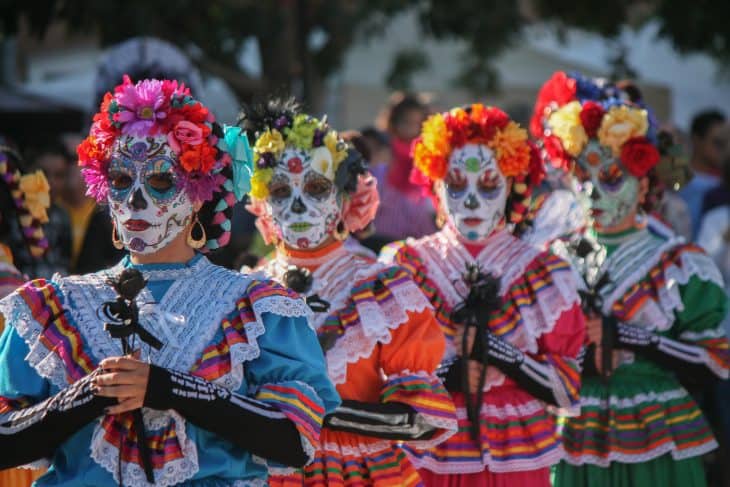
The concept of death is commonly surrounded by unhappy emotions and grief. However, in Mexican culture, the celebration of the Day of the Dead is far from an unhappy occasion. The day of the dead is also a day of remembrance and a time where the family becomes close. Check out our Day of the Dead facts to learn more about this unique tradition.
- The day of the dead is celebrated on November 1st and ends on November 2nd.
- This holiday can be traced back to 2,500 to 3,000 years ago.
- The Day of the Dead was not originally celebrated in northern Mexico until the 20th century.
- The first day is dedicated to deceased infants and children.
- The second day commonly celebrates adults that have passed away.
- The day of the dead is normally celebrated in Mexico and areas with a large Mexican population.
- This holiday is considered a cultural type of celebration.
- The holiday is dedicated to offering prayers and remembrance of friends and family who have passed away.
- Altars are commonly created to honor the deceased.
- The day of the dead is often related to All Saint’s Day.
- In Spanish, the holiday is called Dia de Los Muertos or Dia de Muertos.
- The holiday is also tributed to help the deceased with their spiritual journey.
- Mexicans who celebrate this holiday consider this a happy occasion.
- This holiday is observed because it was made a national holiday by the Mexican government in 1960.
- The festivities were once dedicated to a goddess known as the Lady of the Dead.
- UNESCO inscribed the tradition in the Representative List of Intangible Cultural Heritage of Humanity in 2008.
- Before the 16th century, the celebration occurred during the summer.
- Those who visit their loved ones in graveyards will often leave gifts for the deceased.
- Many under the Catholic church celebrate this holiday as All Saints Day.
- The first day of this celebration is also known as Dia de Los Angelitos or Dia de Los Inocentes.
Day Of The Dead Facts Infographics
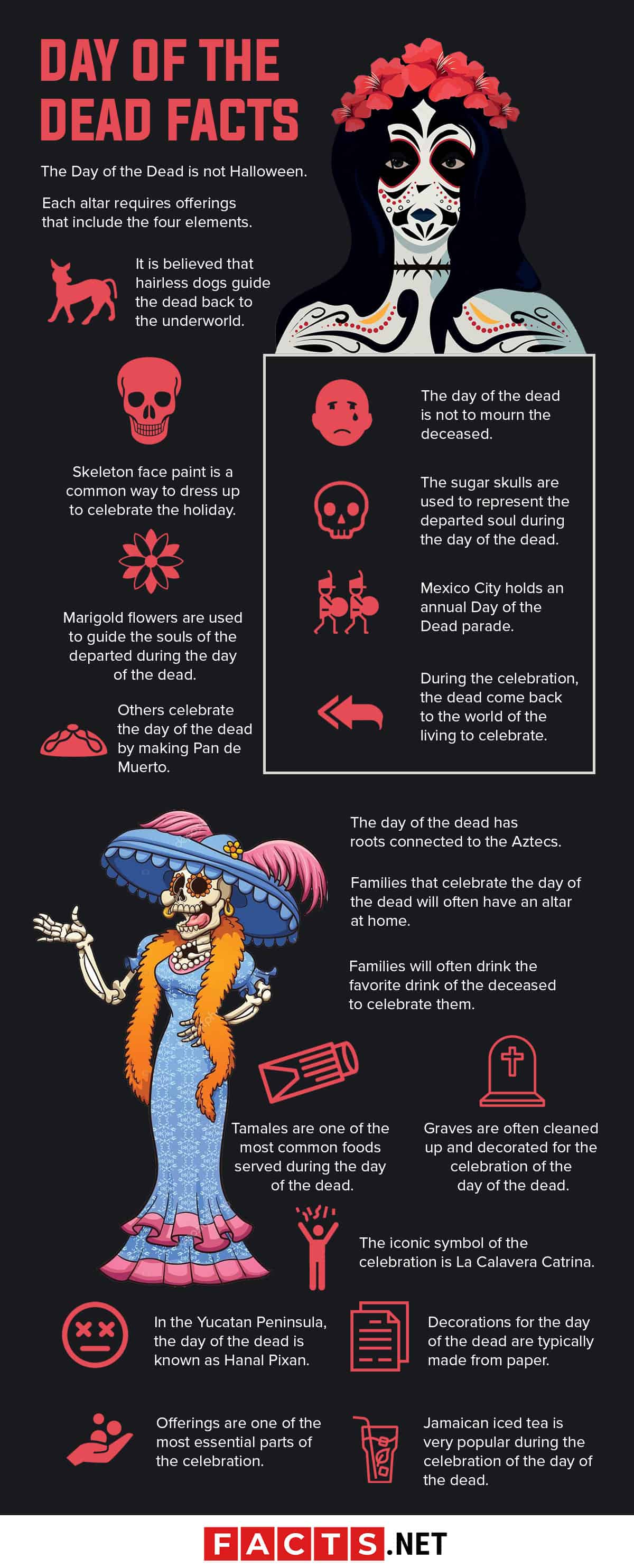
The Day of the Dead is not Halloween.
Contrary to popular belief, the celebration of the Day of the Dead is not the same as Halloween. A major difference is that Dios de Los Muertos is celebrated for three days while Halloween is only celebrated in one night.
Halloween is also short for All Hallows Eve which indicated the night before All Saints Day. The only similarities the two holidays have is the skeletal costumes as well as the imagery of death and graveyards.
Each altar requires offerings that include the four elements.
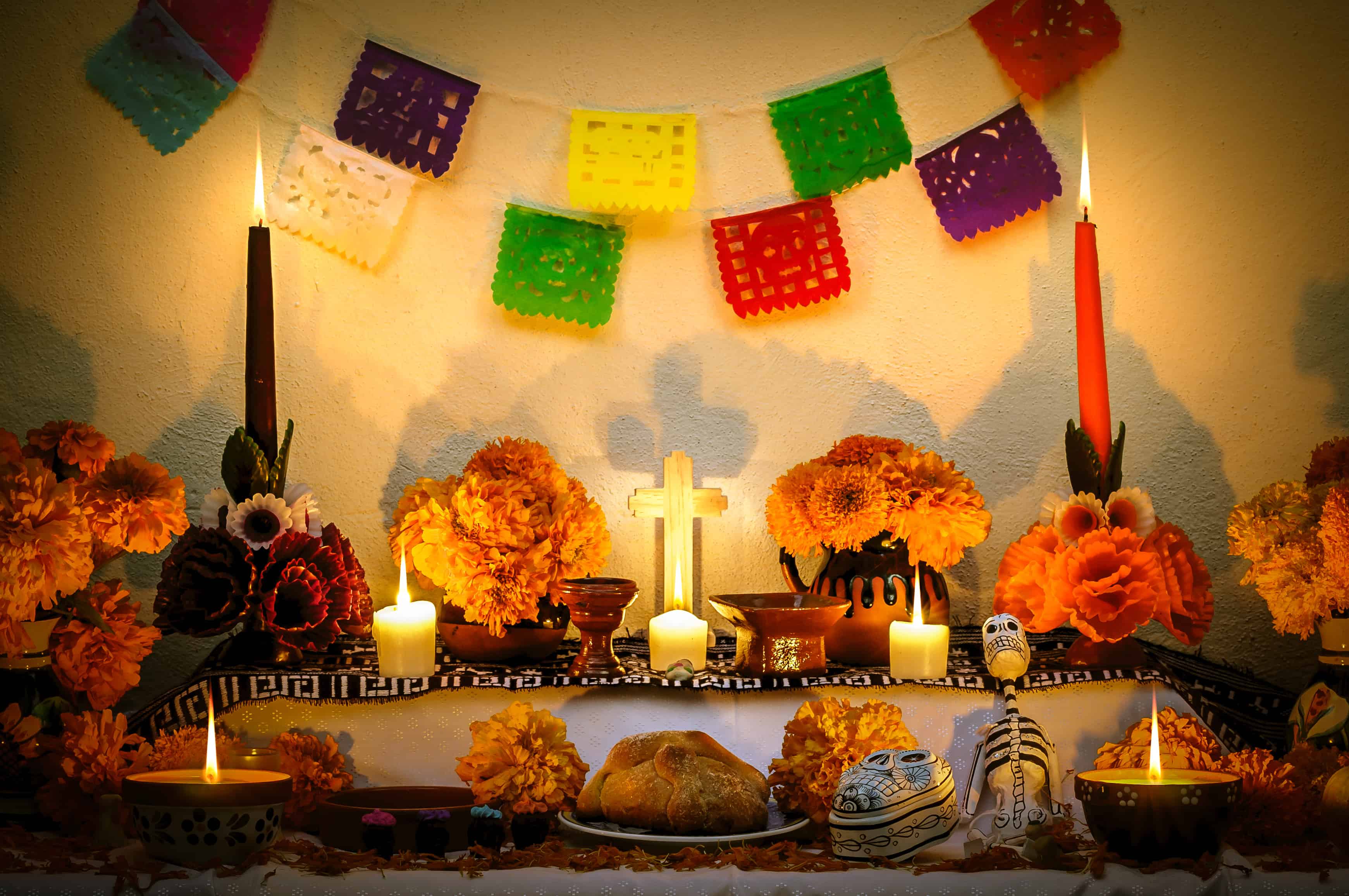
The Ofrenda, or offerings, must include four elements such as wind, water, earth, and fire. For the element of water, water is left in a pitcher on the altar for the spirits to drink. Traditional paper banners represent the wind, and the earth element is represented by food. Lastly, the fire elements come from the lighting of candles so that the spirits may be able to find their way to the altar.
It is believed that hairless dogs guide the dead back to the underworld.
The Xoloitzcuintli, or better known as Xolos or the hairless Mexican dog are revered as spirit guides. Because of this, dogs are often included in the decor of the holiday.
Xolos was officially recognized in Mexico in 1956. They are also considered as one of the rarest and unique dog breeds found in the world.
Skeleton face paint is a common way to dress up to celebrate the holiday.
Many people often paint their faces to represent their loved ones or themselves. There is no correct or incorrect way to paint your face to celebrate this day.
The most common type of face paint during this celebration is a skeleton or skull theme. However, they may also be painted with designs and other vibrant colors to give off different personalities.
Marigold flowers are used to guide the souls of the departed during the day of the dead.
The petals of these flowers are used to create a path that the spirits will follow as a guide. This also allows them to travel from between the world of the living and the spirit world.
It is believed that these flowers are used specifically due to its scent that the spirits can smell. Marigold petals are spread across roads and are used to decorate graves and altars as well.

Others celebrate the day of the dead by making Pan de Muerto.
In English, Pan de Muerto translated to the Bread of the Dead. This bread is traditionally baked in Mexico on the days leading up to the celebration of the day of the dead.
This treat is a traditional sweet roll that symbolizes a common offering for the spirits. This bread can also be eaten by families who are celebrating the day of the dead.
The day of the dead is not to mourn the deceased.
Contrary to popular belief, the day of the dead is not meant for a period of mourning. This holiday is dedicated to celebrating the deceased and remembering them.
The celebration of the day of the dead means recognizing death as a natural part of the circle of life. By doing so, it is believed that the spirits can remain a part of the living community so long as they are remembered.
The sugar skulls are used to represent the departed soul during the day of the dead.
These edible skulls are often decorated and placed as offerings on altars for deceased loved ones. The sugar skull is also known as the Calavera and is usually made from sugar or clay. The skulls are also a symbol of joy and happy memories of the deceased when you think of them.
Mexico City holds an annual Day of the Dead parade.
Since 2016, the city of Mexico has held an annual day of the dead parade in celebration of the holiday. The parade features a wide array of skull imagery and vibrant colors. Musical numbers and performances are often featured during the parade as well. Many individuals who come to watch the parade all dress up and paint their faces in the spirit of the holiday.
During the celebration, the dead come back to the world of the living to celebrate.
The day of the dead is believed to be the border that separates the spirit world and the world of the living. The day of the dead represents the brief period that the deceased come back to the world of the living to feast, drink, dance, enjoy music, and reunite with their loved ones.
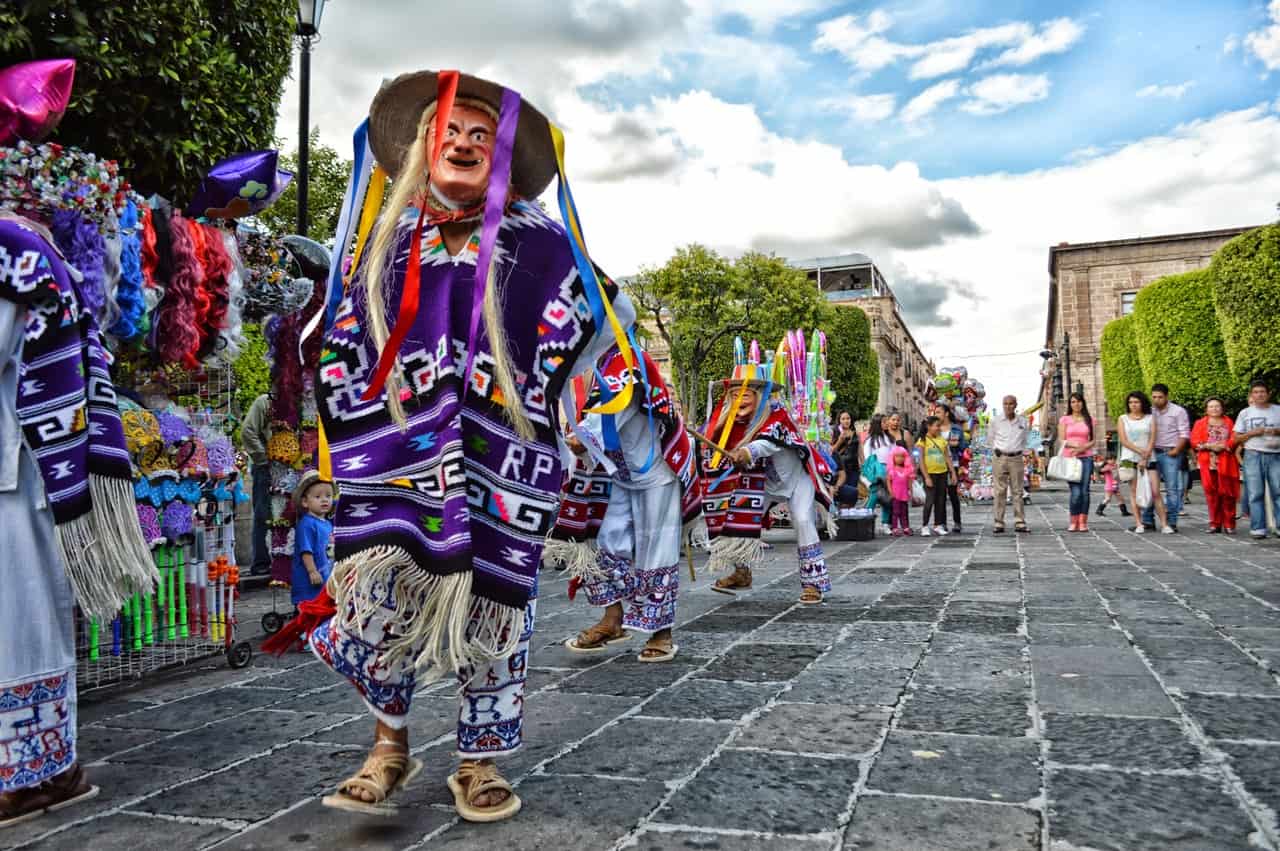
Tamales are one of the most common foods served during the day of the dead.
This traditional Mexican food is commonly popular all year round. However, they are given more significance during the celebration of the day of the dead. Tamales can be described as a small steamed package that is made from corn husks or banana leaves. They are also filled with masa or a type of corn paste.
In the Yucatan Peninsula, the day of the dead is known as Hanal Pixan.
The term “Hanal Pixan” can be translated to ‘nourishment for souls’ in English. This holiday is traditionally observed to remember friends and relatives that have passed away.
Much like the Mexican Day of the dead, the celebration also takes place for three days between October 31 until November 2.
Decorations for the day of the dead are typically made from paper.
Many of the festive decorations used during the celebration of the day of the dead are made from various kinds of colored crepe paper. Paper flowers are one of the most common decorations made from this material.
Some decorations also make use of colored tissue paper and arts and crafts materials such as pipe cleaners. The decorations come in various vibrant colors, each with its symbolism and meaning.
The iconic symbol of the celebration is La Calavera Catrina.
During the celebration of the day of the dead, the most iconic figure is considered to be the La Calavera Catrina. This figure is represented to be the symbol of the afterlife and is considered to be the la grande dame of the festivities.
The concept of La Calavera Catrina was originally politically satire. It was first introduced by painter Jose Guadalupe Posada as a way of mocking the elite during the reign of Porfirio Diaz.
Graves are often cleaned up and decorated for the celebration of the day of the dead.
During the day of the dead, many celebrate by visiting the graves of their loved ones and cleaning up their tombstones. They then proceed to decorate the graves of the deceased with vibrant flowers, food, and drinks as offerings.
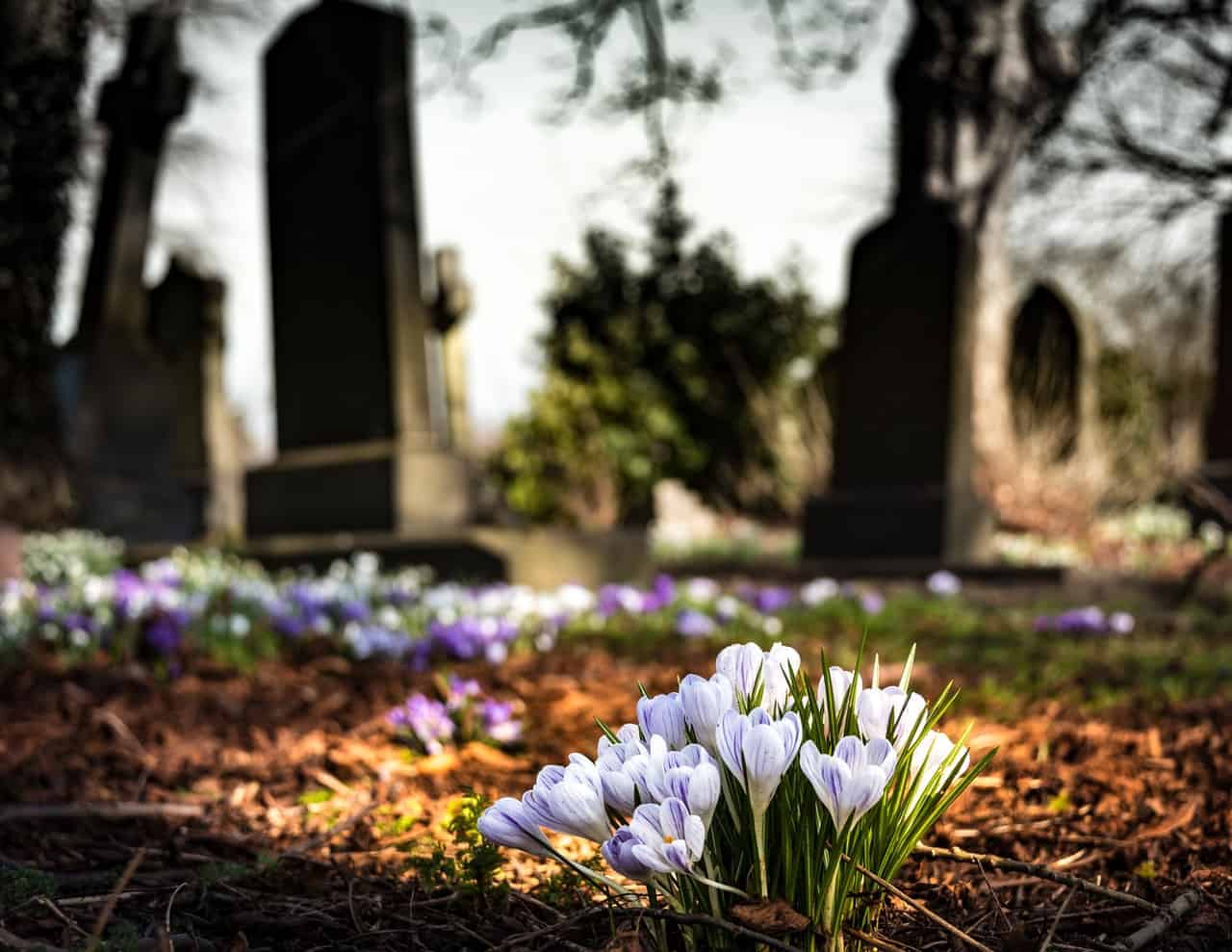
Families will often drink the favorite drink of the deceased to celebrate them.
There are many traditional drinks made in celebration of the day of the dead. However, some customs may differ from family to family. Over time, it has become more common for families to honor the deceased by eating their favorite foods and consuming their favorite beverages. While alcoholic drinks are the main beverage for the holiday, non-alcoholic drinks are also made for families with children.
Offerings are one of the most essential parts of the celebration.
The ofrenda, or offerings, is a collection of objects placed onto a ritual display made during the day of the dead. Photos of deceased friends and family are placed on the center of the altar and surrounded by offerings and decorations. The practice has been dated back to nearly 3,000 years ago and is said to have originated from the Aztecs.
Families that celebrate the day of the dead will often have an altar at home.
For those who cannot visit their family graves annually, home altars are normally established by the family to honor their loved ones during the day of the dead. The altar can vary depending on the family.
Some are decorated extravagantly with large offerings while some are kept small and simple. The ofrenda is the symbol of commemoration of the deceased.
Jamaican iced tea is very popular during the celebration of the day of the dead.
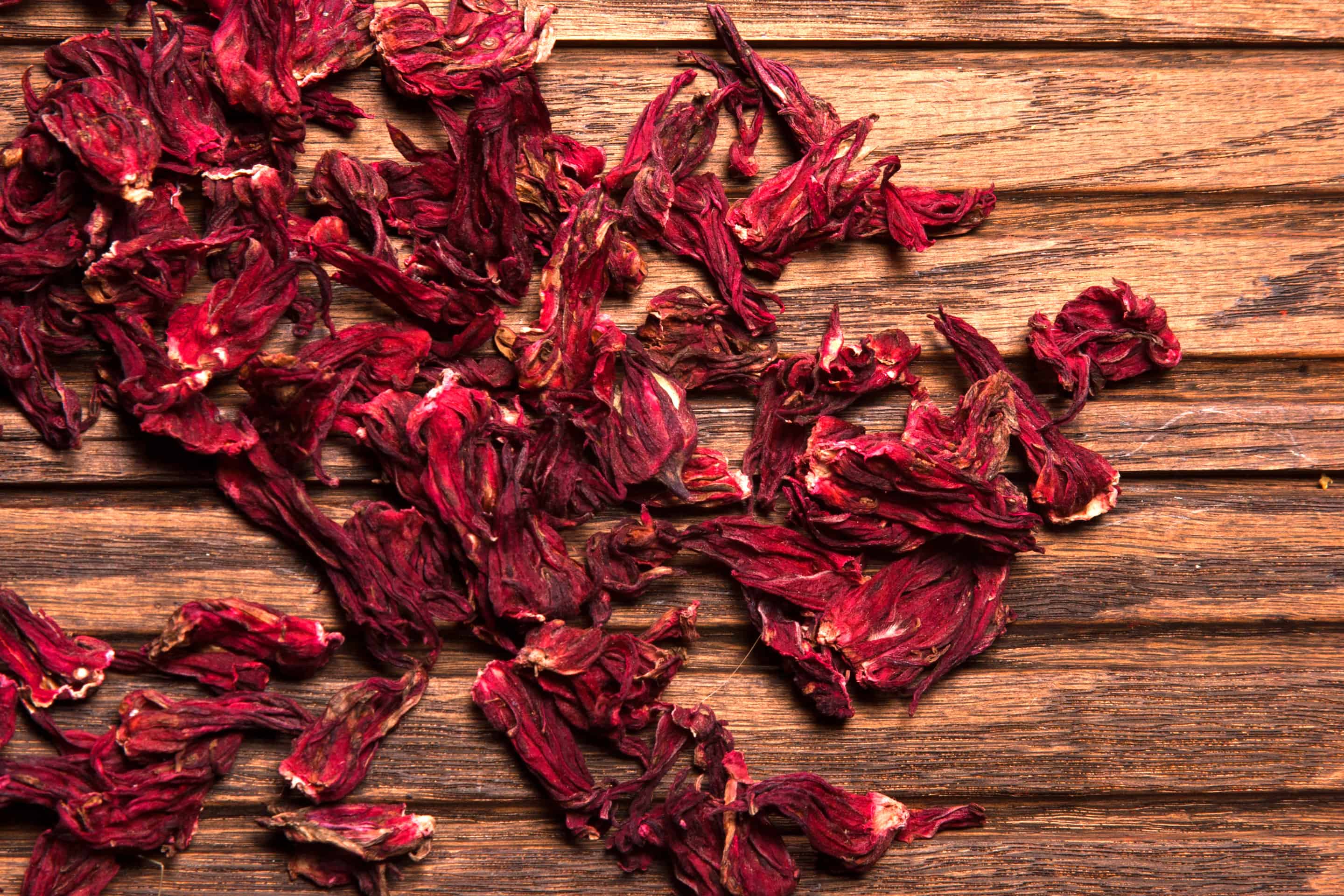
This drink is made from the flowers and leaves of the Jamaican hibiscus plant known as flor de Jamaica in Mexico. This beverage is commonly served cold with ice and is known for its sweet flavor. In English-speaking countries, the drink is also known as hibiscus tea or agua de Jamaica in Spanish.
The day of the dead has roots connected to the Aztecs.
It is said that the origins of the day of the dead began with the Aztec tradition of honoring the dead. In ancient times, the Aztecs were said to offer food and water to the deceased for them to have help when beginning their journey to the land of the dead.
Over time, the tradition has evolved into what modern man knows today as dia de Los Muertos. Previously, the celebration would also occur during August and was celebrated for the whole month.
Was this page helpful?
Our commitment to delivering trustworthy and engaging content is at the heart of what we do. Each fact on our site is contributed by real users like you, bringing a wealth of diverse insights and information. To ensure the highest standards of accuracy and reliability, our dedicated editors meticulously review each submission. This process guarantees that the facts we share are not only fascinating but also credible. Trust in our commitment to quality and authenticity as you explore and learn with us.
